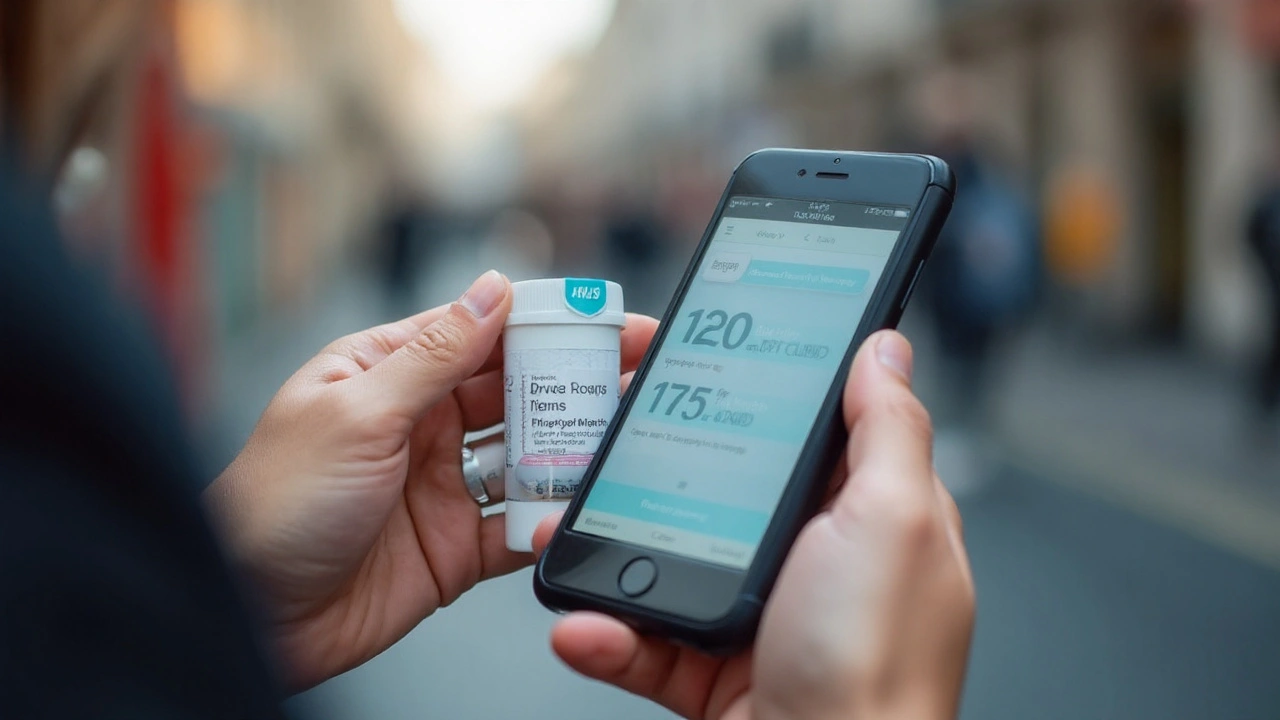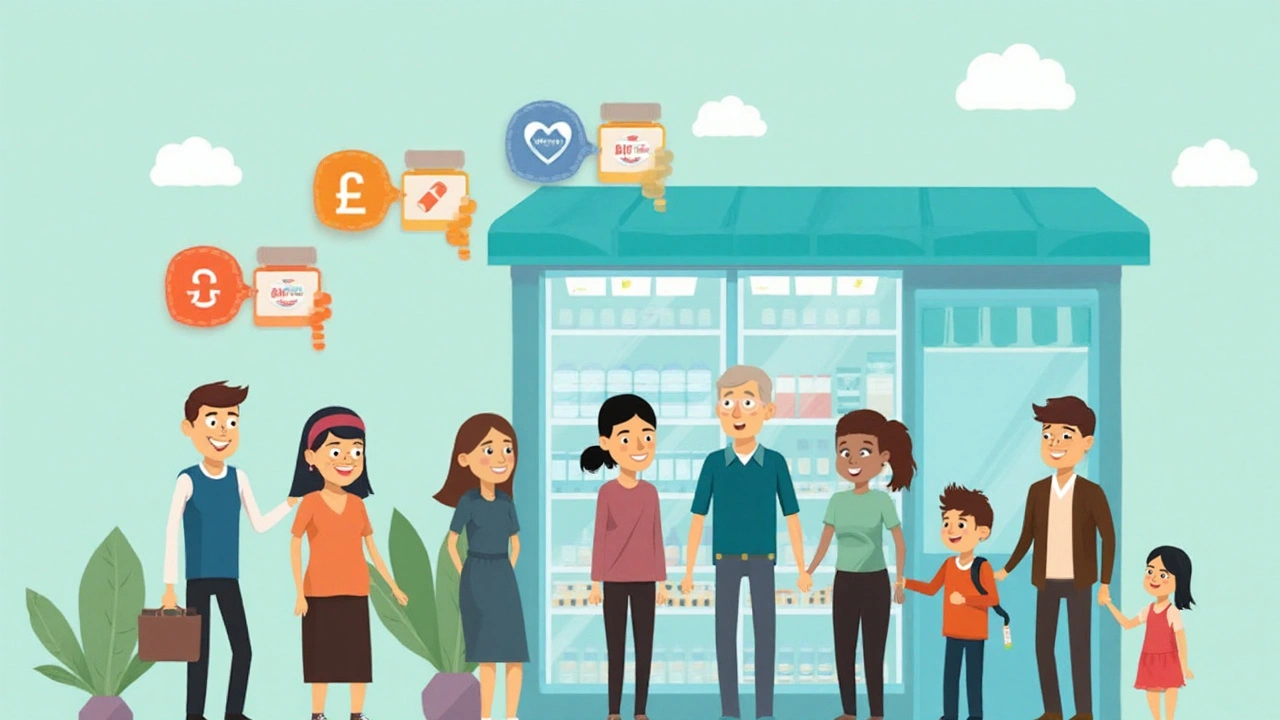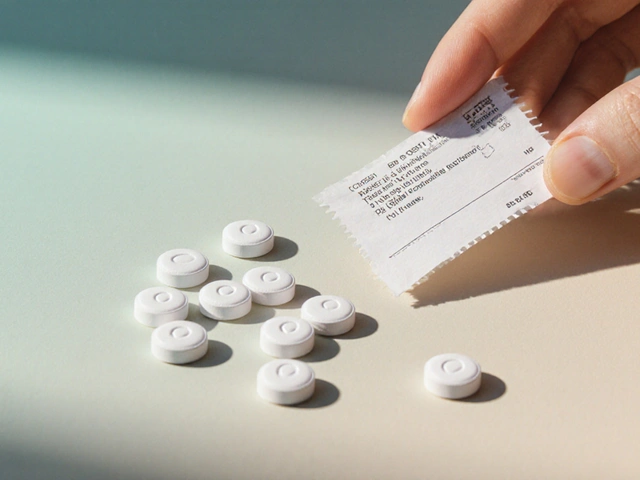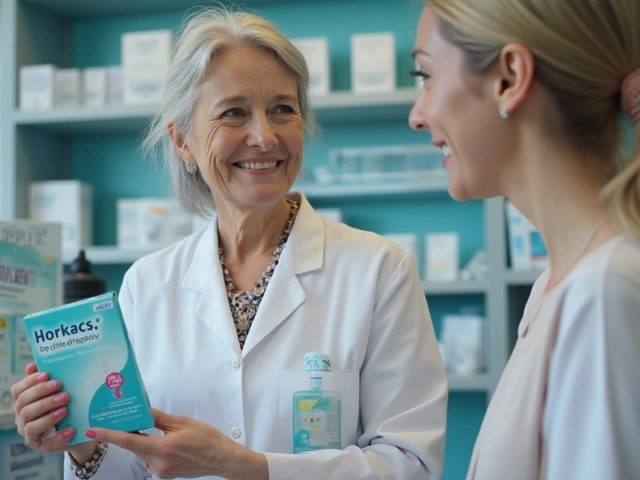If you’ve ever stared in shock at the price of medicine at the pharmacy, you’re definitely not alone. Prescription costs turn a routine errand into a budget buster for millions of Americans. Shoppers have long hunted for workarounds like coupon apps and discount cards, but 2025 is seeing a new wave of fintech services that don’t just trim your bill—they actually put cash back in your pocket.
The Old Guard: How Traditional Coupon Apps Work
Let’s start with how coupon apps changed the game. Apps like GoodRx, SingleCare, and WellRx have become second nature for anyone picking up medications. They gather discounts from pharmacies and drugmakers, then spit out a code or printable card you show at checkout. The pharmacy runs the code, tapping into arrangement networks, and you walk out with meds at a negotiated lower rate—sometimes better than the insurance price.
Why did these apps explode in popularity? For starters, you didn’t have to sign up or enter personal info. Just search your drug, compare prices nearby, and grab a coupon—that’s it. These tools let you see the wild swings in pricing, even with stores on the same block. The savings can be shocking on expensive prescriptions, rarely-covered medications, or when your insurance deductible hasn’t kicked in yet.
But as handy as coupon apps are, there are catches. Sometimes that displayed price doesn’t match what the register rings up, since not all pharmacies honor every card. Also, coupon app prices usually can’t be combined with your insurance coverage, so if your insurance is better, the coupon’s useless. Behind the scenes, your data may be collected and shared, even though most services insist on privacy protections. And as big drug chains launch their own discount programs, your favorite coupon might get shut out completely.
Some shoppers turn to alternatives when GoodRx isn’t enough—if your medication isn’t covered, if the discounts barely matter, or if you want to compare more deeply. If you’re curious about these alternatives to GoodRx, several resources line up different services by cost, drug coverage, and ease of use.
Fintech Enters the Pharmacy Lane
Fintech apps stormed onto the medication savings scene by flipping the traditional model on its head. Instead of chasing elusive coupons, some apps simply pay you. Yes, really. Some fintech platforms work by negotiating direct rebate deals with drugmakers and pharmacies, or by letting you pay with special app-linked virtual wallets that track your purchases for future cash-back perks.
One standout is Capital Rx, a newer startup mixing pharmacy benefit management with fintech tools. Its platform tries to make prescription pricing totally transparent—no smoke and mirrors, just one listed price for every customer. Compare that to the usual pharmacy roulette of hidden fees, list prices, and deal-specific markups. Other up-and-coming tools like RxSaver and CleverRx are using AI-powered notifications and payment integrations. They alert users to price drops, point out where you can stockpile savings, and sometimes reward frequent buyers.
A wild twist: some fintech apps are now making it possible to earn real cash back, just like your favorite shopping credit card. Here’s how it works. You buy your medication, upload a photo of your receipt in the app, and after processing, you pocket a percentage of the purchase price. For expensive prescriptions with little insurance help, that 5% or even 10% rebate can seriously add up by the end of the year. These apps are betting that by helping shoppers save in a direct, no-nonsense way, they’ll build brand loyalty and collect user data to power smarter future deals.
Beyond just savings, fintech has made it easier for customers to see hidden COVID-era markups or hospital surcharges, boosting awareness and pushing pharmacies to be upfront with shoppers. There’s growing pressure on pharmacies and insurers to simplify or at least reveal the real cost of drugs. The hope is, as these platforms scale, they’ll force the industry to compete on price instead of confusion.

How Cash-Back and Reward Programs Stack Up
If you’re used to store loyalty perks for groceries or gas, the idea of prescription reward programs might sound overdue. But pharmacy purchases fall into a quirky regulatory area, so it’s only in the last couple of years that cash-back on prescriptions went mainstream. The nuts and bolts? You might get a percentage of your purchase credited back to your account, or rack up points to use as future discounts, redeems, or even prepaid debit cards.
Cards like ScriptSave WellRx now offer reward tiers; as you fill more prescriptions, your cash-back rate climbs. Fintech newcomers like Medly or HealthWallet tie prescription rewards to their own branded cards, nudging shoppers to use them for both refills and eligible retail partners. And be on the lookout for pharmacy chains rolling out their own cards—Walgreens and CVS have both dabbled in cash-back pilots for eligible generics or specific medications.
But don’t toss out your phone full of coupon apps just yet. Some drugs—especially rare generics or specialty medications—are still best served by a traditional coupon code. And not all fintech apps run in every state, or cover meds paid for with insurance. Double-check which programs apply, since pharmacy software isn’t always updated in real time. It’s worth keeping receipts, tracking discounts in a spreadsheet, or even snapping photos of your pharmacy transactions to make sure you’re getting every cent owed.
Where cash-back really shines is with self-pay or high-deductible customers—the shoppers least helped by insurance. After several months, the annual savings from stacking rewards, cash-back, and coupon codes can cross the $1,000 mark for families with ongoing prescriptions. Even a basic 5% back on $400 in meds is $20 in your pocket for doing what you’d need to do anyway. Not every pharmacy is in the rewards network, so it pays to call ahead and ask about participation, or check the app’s partner locator before transferring a prescription.
Surprising Things to Watch For With New Tech
Not every new savings trick is a slam dunk. For starters, some fintech apps prompt you to pay out of pocket instead of running medications through your insurance. This can be a lifesaver for folks without insurance, but anyone on a high-cost specialty medication might find those out-of-pocket costs higher than their insurance copay. Always cross-check your insurance coverage, and ask your pharmacist to run numbers both ways.
Another unexpected snag is privacy. Because fintech and pharmacy industries are racing to gather data, some apps or services may require access to your purchase history, health info, or even let third-party marketers use your details. It’s a good idea to read privacy policies (yes, boring, but necessary) and tweak permission settings before you connect a payment method or upload receipts.
Regulations also trip up some platforms. State and federal laws sometimes block cash-back offers for government healthcare program members (like Medicare or Medicaid) to avoid anti-kickback violations. If you rely on these programs, locate fintech or coupon services that spell out eligibility upfront.
One newer problem making headlines: "phantom discounts" or misleading prices. Some marketers inflate baseline prices, then promise big savings to create the illusion of a deal. Before trusting any price, compare a few coupon apps and fintech portals side-by-side. Trust your gut, and remember, if a price seems weirdly low, it’s smart to call your pharmacy to double-check before making the trip.
On the plus side, some platforms offer built-in consultation services, so you can actually message a pharmacist or even a doctor before paying a dime. That’s a game-changer for figuring out cheaper drug alternatives or learning if there’s a generic equivalent.

Tips for Saving Even More on Your Prescriptions
If you want to play the prescription-savings game like a pro, here’s a practical rundown:
- Always compare prices at at least three local pharmacies using a mix of coupon apps and fintech tools.
- If your drug is pricey, check if there’s a lower-cost generic or a therapeutic alternative. Your pharmacist or a telehealth doctor can help.
- Look for “90-day supply” deals, as longer scripts often unlock deeper discounts or higher cash-back rates.
- Don’t shy away from calling pharmacies to match or honor online coupons—it’s often negotiable, especially at independent pharmacy stores.
- Sign up for pharmacy loyalty programs but opt-out of extra marketing if you care about privacy.
- If you have insurance, ask your pharmacist to run the insurance price versus the coupon or fintech deal. Sometimes, paying cash (to unlock a coupon or reward) saves more!
- Track your savings. Over a year, seeing how much you dodged in out-of-pocket costs is super motivating.
- For expensive or hard-to-find medications, check manufacturer websites for direct patient assistance or rebate info—they can stack with other savings in some cases.
Prescription shopping is no longer just about grabbing the lowest sticker price. Between fintech’s smart rewards, classic coupon apps, and pharmacy loyalty perks, there’s never been a better time to outsmart pharmacy prices—without being a financial genius. And with more platforms joining the fray, watch for this space to get even more competitive, transparent, and fair for the everyday shopper.



 Medications
Medications





Jacqueline D Greenberg
August 14, 2025 AT 02:06Fintech cash-back on prescriptions is already changing the game for people who pay out of pocket.
If your pharmacy visits often mean draining the wallet, those 5 to 10 percent rebates add up fast and they stack with smart shopping habits like 90-day fills and generic switches.
Also, the price transparency some of these apps push is forcing pharmacies to stop hiding behind opaque list prices, which is a win for everyone.
Just keep receipts and don't assume every discount will work with insurance, because in many cases it won't and the app will recommend paying cash instead.
Dorothy Anne
August 14, 2025 AT 16:00Been using a couple of cashback apps for routine meds and it actually feels good to see a small rebate land in the account.
Small wins matter, so I set a weekly reminder to upload receipts and compare prices before refilling.
Also, sign up for store loyalty but turn off marketing if privacy matters to you.
Jim MacMillan
August 15, 2025 AT 05:53Everyone acting surprised that fintech is disrupting pharmacy pricing like it disrupted banking, classic.
Reality is simple, PBMs were ripe for competition and these startups are the sharp knives slicing through middlemen inefficiencies 😏💳.
Of course it will ruffle feathers at the big chains, and of course the big chains will try to co-opt the trend once it proves profitable.
At the end of the day the consumer wins when markets get messy and new players bring clarity.
Danielle Greco
August 15, 2025 AT 19:46Receipts, receipts, receipts 📸.
Take a quick snap of every pharmacy charge and store them in a folder or a simple spreadsheet so you can track real savings over time.
That little habit has saved me a couple hundred bucks in a year just by spotting a misapplied coupon once.
Bansari Patel
August 16, 2025 AT 09:40There is no magic here; these platforms work because they aggregate and then monetize user behavior, pressure pharmacies, or snag rebates from manufacturers.
I like the outcome for consumers, but don’t let the feel-good marketing hide the fact that this is a data play too.
If people accept opaque terms and permissions for convenience, they will trade privacy for a few bucks, and that’s a steep trade for long-term autonomy.
Still, I’ll use the tools because saving money when you need meds is essential, but I also encourage others to push for legal transparency and better consumer protections.
Rebecca Fuentes
August 16, 2025 AT 23:33This shift toward cash-back fintech for prescriptions is a watershed moment and it deserves a clear-eyed look at both promise and limits.
First, the upside is straightforward: for self-pay customers and people with high deductibles, a predictable cash-back percentage transforms erratic outlays into measurable savings and restores some agency to shoppers who previously had none.
Apps that negotiate with manufacturers and pharmacies or reimburse receipts create a direct financial incentive for customers to compare prices and to prefer transparent vendors.
Second, this model exposes structural problems: opaque markups, inconsistent pharmacy software, and a fragmented market where the same drug can cost wildly different amounts down the street.
Third, the regulatory landscape is messy and will remain a constraint for many users, especially those on government programs like Medicare or Medicaid, where anti-kickback rules can block participation in certain cash-back schemes.
Fourth, privacy cannot be ignored. The same data that powers price negotiation also fuels targeted marketing and resale of shopping patterns unless explicitly barred by contract or law.
Fifth, operational friction remains real; not every pharmacy updates coupon tables in real time and not every fintech supports every state or drug, so users need to double-check and occasionally call ahead.
Sixth, the best strategy for consumers is blended: keep coupon apps, test fintech cash-back on a case-by-case basis, and always compare the insurance copay versus the app price so you aren’t accidentally paying more.
Seventh, there is an advocacy angle worth pursuing: as these platforms scale, they can gather anonymized evidence of price variation and lobby for clearer disclosure laws that make list prices and markups public, which benefits everyone.
Eighth, pharmacy chains will react with their own pilots and loyalty programs, and that competition should drive better deals, though it may also create more fragmentation and the need for aggregator tools.
Ninth, consumers should insist on simple features from any app: clear eligibility language, an easy way to export transaction data, and an opt-out of third-party marketing.
Tenth, clinicians and pharmacists have a role too; they can suggest affordable therapeutics and help patients navigate switching to generics safely while preserving therapeutic outcomes.
Finally, keep a habit of tracking savings annually and use the numbers to hold platforms accountable while celebrating the concrete relief these tools can provide.
All things considered, fintech cash-back is not a silver bullet, but it is an important tool in a broader toolkit that, if used wisely, can make medicines far more affordable for many people.
True Bryant
August 17, 2025 AT 13:26Let's be blunt about PBM dynamics and spread pricing, because glossing over jargon does no favors.
These fintech players are effectively re-engineering the revenue flows that PBMs historically controlled, cutting out opaque rebate waterfalls and reassigning value capture back to either the payer or the patient depending on the model.
Economically speaking, cash-back is a redistribution of margin, not a net reduction in system cost unless regulatory pressure or competition compresses upstream prices.
So enjoy the rebates, but keep an eye on whether the total system spend actually declines over time or whether margins simply migrate around the same actors.
Philippa Berry Smith
August 18, 2025 AT 03:20Cash-back on prescriptions is finally a thing and I’m relieved.
Linda van der Weide
August 18, 2025 AT 17:13Privacy caveats are the real plot twist behind glittering cashback numbers.
Even anonymized datasets can be stitched back together when combined with purchase patterns and location data, and that erosion of privacy is rarely priced into the convenience value of an app.
People think a few dollars back is the full story, when in reality they may be funding finely targeted pharmaceutical marketing campaigns.
It is wise to demand concrete contractual limits on data resale and a clear delete option that actually removes past receipts and associated metadata.
Sharon Bruce
August 19, 2025 AT 07:06Support local pharmacies first, always.
Big chains run pilots, sure, but independent pharmacists often give better service, match prices when asked, and know their community customers personally 😊.
Use fintech apps but keep local pharmacies in the loop so they can compete fairly.
Jacqueline D Greenberg
August 19, 2025 AT 21:00Agreeing with the point about calling pharmacies, because it's surprising how often a quick call sorts pricing quirks.
Pharmacists can run alternative NDC codes, honor a coupon manually, or suggest a therapeutic equivalent that a price checker missed.
It takes five minutes and sometimes saves significant cash, and that small effort compounds over time.
Dorothy Anne
August 20, 2025 AT 10:53Quick tip to keep momentum: set up a simple habit tracker for refills so you never miss a price drop window.
Automate uploads where possible and reward yourself with something small when your quarterly savings hits a milestone - positive reinforcement works.
Bansari Patel
August 21, 2025 AT 00:46We need policy, not just clever apps.
Fintech can lighten pain in the short term but it cannot substitute for legislation that forces price transparency, forbids deceptive baseline inflation, and protects consumer data irrevocably.
Until then, use the tools but push your representatives to support clear rules that prevent phantom discounts and require portability of savings data so consumers truly own their transaction history.
That kind of structural change will keep the benefit in consumers' hands rather than letting it evaporate into new marketing budgets.
Matthew Platts
August 14, 2025 AT 03:27Fintech cash-back is the real shake-up here, plain and simple.
Paying out of pocket and getting a cut back feels cleaner than chasing five coupon codes that might not work at checkout.
For folks on high deductibles, that steady 5 to 10 percent back can actually change behavior over a year and make meds more affordable without jumping through hoops.
Just keep receipts and run the insurance numbers once so you know when a cash price plus rebate beats the copay.
Joshua Agabu
August 14, 2025 AT 06:13Nice to see real cash coming back to patients instead of just discounts that disappear.
Kasey Mynatt
August 16, 2025 AT 13:47Practical tip: if you’re juggling multiple meds, track them in a simple spreadsheet and log coupon vs fintech savings each month.
That little habit shows you where real dollars come from and stops you from assuming a single app is always best.
Also, ask your pharmacist to run both the insurance and the cash price during pickup and save a photo of the receipt.
It only takes an extra minute and it protects you from phantom discounts or pricing errors.
Don’t forget 90-day fills when available since they tend to stack better with cash-back rates and reduce trips to the pharmacy.
Edwin Pennock
August 18, 2025 AT 21:20Fintech hype is a thing but there’s a downside people gloss over.
Some apps push paying out of pocket which is fine for generics but risky for specialty drugs where insurance really helps.
These platforms gather a lot of data under the promise of better deals later, and that data has real commercial value.
Anyone treating fintech like a silver bullet is setting themselves up for surprises when coverage rules kick in.
John McGuire
August 21, 2025 AT 04:53Cash-back perks are awesome when used right 😎
Stacking a rewards card, a coupon, and a fintech rebate can actually feel like winning.
Just don’t forget to opt out of extra marketing unless you want daily promo emails.
newsscribbles kunle
August 23, 2025 AT 12:27Interesting angle from these fintech folks, but local context matters hard.
In some countries people rely on informal networks for cheaper meds, so this model is more of a US play than a global cure.
Still, transparency is a win anywhere medicine prices are opaque, and any pressure on big chains to show real costs benefits everyone.
Bernard Williams
August 25, 2025 AT 20:00Fintech cash-back and PBM-driven pricing deserve a deeper look because the mechanics are what determine real savings, not the flashy marketing.
First, understand where the money comes from. These fintech platforms usually negotiate rebates with manufacturers or pharmacies, or they earn referral fees when users choose certain pharmacies. That cash doesn't always come straight from thin air; sometimes it's a reallocation of the margin that would otherwise be absorbed by a PBM or by the pharmacy's list pricing. The key win for consumers is transparency: when the platform lists a single price and shows the rebate, users can see the effective out-of-pocket cost instead of guessing between list price, copay, and hidden fees.
Second, timing and behavior matter. Regular meds filled monthly create more leverage for fintech firms to offer loyalty tiers and increasing cash-back. If someone moves to a 90-day supply and uses an app that tracks purchases, the cumulative rebates can outpace one-off coupon wins. That said, specialty meds with strict distribution channels often have different economics where manufacturer assistance programs or insurance copays remain superior.
Third, privacy and data use are central risks and opportunities. When you upload receipts or connect a payment method, that purchase history becomes fuel for targeted negotiation and personalized offers. For consumers who want better prices, that trade can be acceptable, but it should be explicit. Look for platforms that anonymize transaction data and clearly state whether they sell de-identified aggregates or allow third-party marketing access.
Fourth, regulatory complexity is nontrivial. Anti-kickback laws limit who can get rebates in government programs, so Medicare and Medicaid recipients may find fewer fintech options. State rules on coupon stacking and pharmacy reimbursements can also change how offers are honored at the register. If you use government coverage, pick services that spell out eligibility and show sample scenarios for insured vs uninsured pricing.
Finally, operational steps you can take right now: keep digital copies of receipts, compare three price sources before filling, lean into 90-day fills for maintenance meds, and use pharmacies that participate in the fintech network. When a platform claims an outrageous savings percentage, cross-check the baseline price and call the pharmacy to confirm before you drive over. Over a year, disciplined tracking often reveals the clear winners for each medication in a household.
In short, fintech brings actual cash incentives and useful visibility, but the best results come from treating these tools as part of a toolkit rather than a single solution. Use them, verify them, and let real receipts guide your choices.
Michelle Morrison
August 28, 2025 AT 03:33Privacy is the elephant in the room and it cannot be ignored.
Giving an app receipts and payment access hands over intimate patterns about health, timing, and consumption that advertisers and data brokers love.
Even de-identified data can be re-identified with enough cross-references, so users should demand strict limits on resale and clear opt-outs for marketing.
Also, those shiny cash-back offers can be bait to normalize wider data harvesting practices that creep into other services.
Lolita Rosa
August 30, 2025 AT 11:07People forget the human cost when they cheer discounts too loudly.
Pharmacies have to make money somewhere, and if those margins are squeezed the independents who offer concierge care suffer first.
Remember to support local pharmacists where possible, even while using apps for price checks.
Matthew Bates
August 31, 2025 AT 06:33Precise language matters when evaluating these tools.
Not all "cash-back" is equivalent, and conflating rebates with instant discounts is misleading.
Read the terms and verify whether the credit is immediate, delayed, conditional, or subject to caps and exclusions.
Being meticulous prevents surprises at reconciliation time.
Bernard Williams
August 31, 2025 AT 20:27Privacy concerns raised earlier are valid and deserve a measured response.
Platforms that truly anonymize transaction data and publish independent audits are the ones I trust more, and a growing few do this work publicly.
When an app promises aggregated insights, check for an external privacy audit or a plain-language summary of how data flows through their systems.
Also, prefer services that give you a downloadable copy of your data so you retain control and can delete accounts cleanly.
For those uneasy about connecting payment methods, photo uploads of receipts are a middle ground that many apps accept and that reduces continuous access to your accounts.
Finally, if a company resells behavioral profiles, that should be a hard exclusion for anyone who values medical privacy, and regulatory pressure is finally nudging firms toward greater transparency on this point.
John McGuire
September 1, 2025 AT 10:20Quick note: don't forget to check app partner lists before transferring a script, saves a headache later 😅
Also set calendar reminders for refill syncing to maximize 90-day benefits.
Matthew Platts
September 13, 2025 AT 00:23Small behavior changes add up, and the article nails that point without fluff.
Stacking tools, tracking receipts, and using the right platform for each drug is the practical play here.
Everyone pays less when shoppers are informed and pharmacies compete openly.